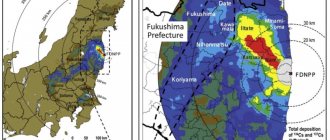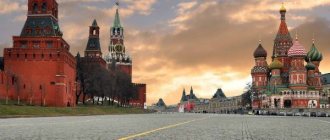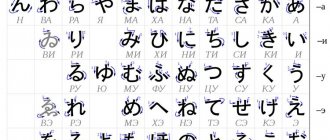Preconditions for war
Already in the early thirties, there were prerequisites for an armed conflict between the USSR in the Far East and the growing strength of Japan. In 1938, the first clash took place, known as the Battle of Lake Hassan. Subsequently, there were several small skirmishes, but these events and the Soviet-Japanese border conflicts did not lead to any casualties and did not continue.
In August 1939, a non-aggression agreement and a secret part were signed between Nazi Germany and the Soviet Union, according to which the Red Army pledged to conduct military operations as an ally of the German troops. At the same time, Hitler was establishing contacts with the Japanese Emperor, wanting to have such a powerful militaristic partner on the Pacific front. Subsequently, in the period from 1939 to 1941, Japan and the USSR were actually allies, but a full-scale war between them could begin at any time and for various reasons.
For Japan, the war with the USSR had the following meaning:
- expansion of territories;
- seizure of lands with valuable resources;
- the ability to control part of the mainland.
In the late thirties and early forties, the Japanese Empire was a militaristic state with a bias towards Nazism and fascism. Local military leaders, who owned virtually all the power in the country, considered part of the territory of China and the Far East with Kamchatka as their ancestral lands, preparing to attack the USSR at any moment.
At the same time, there was an industrial boom in Japan; the size of the army, which had a huge air fleet, was actively increasing in this country, and numerous heavy naval destroyers and battleships were being built at Tokyo shipyards. In the early forties, Japanese troops captured part of Manchuria. Such an occupation was considered as a springboard for further advance to the Far East.
Disposition of forces
De facto Japan was an ally of Nazi Germany. However, in reality, the Japanese generals conducted military operations solely in the interests of their country, primarily trying to counter the growing influence of the United States in the Pacific region and planning to increase territory by seizing land in China and the USSR.
At the start of World War II, Japan was one of the most powerful militarized states in the world. Neither China nor the Soviet Union alone could resist such a military machine in those years. Moreover, the bulk of the Red Army was concentrated in the European part of the country, and the Far East remained defenseless. It is not surprising that many Japanese generals built projects to quickly seize part of the territories, persuading the emperor to declare war on the USSR as soon as possible.
However, the industrial lobby was able to influence the emperor, who abandoned plans to seize new territories, while wanting to reduce the influence of the United States in the Pacific. As a result, Japan declares war on the United States , carrying out the famous air attack on the American naval fleet in Pearl Harbor. Despite the first successes, it was not possible to achieve a blitzkrieg, and the campaign became protracted. Subsequently, Australia and a number of other countries joined the United States. Together, in 1943-1945, they managed to inflict a number of serious defeats on Japanese troops.
At the beginning of 1944, the leadership of the USSR and its allies from the USA and Great Britain already understood that the fate of Nazi Germany, Italy and Japan was sealed. It was necessary to determine the subsequent division of spheres of influence both in Europe and in the Southeast Asian region. The latter was considered by the United States as its patrimony, especially since it was American troops who conducted large-scale military operations here, inflicting one defeat after another on Japan.
Yalta Conference
In February 1945, a famous meeting took place in Yalta, in which the top leadership of Great Britain, the USA and the USSR took part. During the negotiations, it was possible to obtain from Stalin consent for the USSR to enter the war with Japan, which the Red Army undertook to do three months after the final victory over Nazi Germany. In exchange for this, the Kuril Islands and South Sakhalin were given to the Soviet Union after the division of Japan. This conference subsequently redrew the world map in favor of the three powers.
The outcome of the Yalta Conference was:
- division of influence in Western and Central Europe;
- agreements on the start of hostilities on the Pacific front.
By that time, a five-year neutrality pact was in force between Japan and the USSR, which was concluded at the end of 1941. In April 1945, that is, a month before the end of the Great Patriotic War, the USSR unilaterally announced the termination of this treaty, acting without a declaration of war within the framework of the oral agreements of the Yalta Conference. At the same time, military control over Japan, and consequently over the entire Pacific region, after the completion of all hostilities was supposed to pass to the United States.
Active hostilities
Initially, the Soviet Union did not have a powerful military group in the Far East, but immediately after the end of World War II, part of the regular army was hastily transferred to the area of Khabarovsk and Vladivostok. The strategic plan of the Red Army generals implied the conduct of three military operations:
- Kurilskaya.
- Yuzhno-Sakhalinskaya.
- Manchurian.
In the Manchuria region, the Soviet army was opposed by General Otsuzo Yamada, who led the Kwantung Army. Under his command there were more than a million people, 1,000 tanks, 1,500 aircraft and more than 6,000 mortars and guns. By the time hostilities began, the Soviet army had a significant numerical superiority, and the superiority in tanks, aircraft and powerful artillery was enormous. At the same time, the Japanese troops were known for their ability to skillfully conduct battles, so even with such a disposition, the war promised to be extremely difficult and could last for years.
Japanese troops were able to prepare perfectly for the inevitable war with the Soviet Union. Numerous fortified areas and bunkers were established, each of which was subsequently taken with huge human losses on the part of the Red Army. In the first few weeks of fierce fighting, the USSR army was able to advance 150 kilometers forward on the Trans-Baikal Front. The Japanese troops continued to fight desperately; the samurai, whose detachment was commanded by Oyama Iwao, rarely surrendered, preferring to die on the battlefield.
The most fierce and bloody battle of this war is the battle for the Camel and Ostry heights, which were part of the fortified Khotou region. The Japanese set up numerous artillery crews at the heights, the approaches to the mountains were swampy, and movement was significantly complicated by numerous small, deep rivers.
The defenders of Ostry Peak rejected the demands of the Soviet troops for surrender and defended the fortified area they had made until the last soldier. The fighting in this area ended in early September, with the ratio of lost soldiers in the Red Army being ten to one Japanese dead.
Workaround maneuver
The Russo-Japanese War of 1945 and the actions of the Soviet Army were very successful from the very beginning. I would like to note one outstanding operation, which consisted of a 350-kilometer throw of the 6th Tank Army through the Khingan Range and the Gobi Desert. If you look at the mountains, they seem to be an insurmountable obstacle to the passage of technology. The passes that Soviet tanks had to go through were located at an altitude of about 2 thousand meters above sea level, and the slopes sometimes reached a steepness of 50⁰. That is why cars often had to drive in a zigzag.
In addition, the advancement of technology was further complicated by frequent heavy rains, accompanied by river floods and impassable mud. But, despite this, the tanks still moved forward, and already on August 11 they overcame the mountains and reached the Central Manchurian Plain, to the rear of the Kwantung Army. After such a large-scale transition, Soviet troops began to experience an acute shortage of fuel, so it was necessary to arrange additional delivery by air. With the help of transport aviation, it was possible to transport about 900 tons of tank fuel. As a result of this operation, more than 200 thousand Japanese soldiers were captured, as well as a huge amount of equipment, weapons and ammunition.
End of the campaign
Despite the first successes of the Red Army soldiers in the battle with the enemy, military operations against the Kwantung Army could drag on for many months. The situation was complicated by the fact that the Japanese had adopted the effective tactics of guerilla kamikaze raids. They used explosives to penetrate the Red Army camps, blow themselves up and thereby destroy a large number of enemy personnel. In the first days of August alone, about one and a half thousand Red Army soldiers were killed during such raids.
The turning point in the Soviet-Japanese War was not so much the defeat of the Kwantung Army in August 1945, but the American nuclear bombing of Hiroshima and Nagasaki. On August 6 and 9, 1945, American troops dropped two nuclear bombs, killing about 250 thousand civilians. This was the first and only fact to date of the use of atomic weapons in combat operations. For the Soviet Union, the presence of such destructively powerful weapons in the United States was a revelation.
In the Soviet Union, many generals at that time convinced Stalin not to stop at the Southern Kuril Islands, but to develop his offensive, expanding the zone of influence throughout Japan. However, after the atomic bombing of Hiroshima and Nagasaki, such plans had to be abandoned immediately. The Japanese command ceased active hostilities, and on August 15, complete surrender was announced.
On September 2, 1945, on board the largest American battleship Missouri, three representatives of the United States, Japan and Russia signed the unconditional surrender of the Land of the Rising Sun. This date is believed to mark the end of World War II. However, on certain fronts, fighting continued until September 10. The full text of the treaty was kept secret, and only a small part of it briefly became public.
Enemy fortified areas
All participants in the Russo-Japanese War of 1945 understood perfectly well that sooner or later, it had to begin. That is why the Japanese created a significant number of well-fortified areas in advance. For example, you can take at least the Hailar region, where the left flank of the Transbaikal Front of the Soviet Army was located. Barrier structures in this area were built over more than 10 years. By the time the Russo-Japanese War began (1945, August), there were already 116 pillboxes, which were connected to each other by underground passages made of concrete, a well-developed trench system and a significant number of fortifications. This area was covered by Japanese soldiers, whose numbers exceeded their divisional strength.
In order to suppress the resistance of the Hailar fortified area, the Soviet Army had to spend several days. In war conditions this is a short period of time, but during the same time the rest of the Transbaikal Front advanced forward by about 150 km. Considering the scale of the Russo-Japanese War (1945), the obstacle in the form of this fortified area turned out to be quite serious. Even when its garrison surrendered, the Japanese warriors continued to fight with fanatical courage.
In the reports of Soviet military leaders one can often see references to soldiers of the Kwantung Army. The documents said that the Japanese military specifically chained themselves to machine gun frames so as not to have the slightest opportunity to retreat.
Results for the USSR
Having fulfilled all the conditions of the agreements signed at the Yalta Conference, the USSR, after the end of the Japanese war, returned previously lost territories, including the Kwantung Region with the villages of Dalniy and Port Arthur, South Sakhalin, as well as several Kuril Islands. However, Japan, already in the nineties and two thousand, sought the return of a number of disputed territories, which this country still considers their own.
The losses of the Red Army during the fighting amounted to 12 thousand killed and 24.5 thousand wounded. Enemy troops destroyed 62 aircraft, 232 mortars and long-range guns, as well as 78 tanks. On the Japanese side, losses are, according to unconfirmed reports, 84,000 killed and 640,000 captured.
Despite the successful completion of hostilities, the victory for the USSR in the war with Japan did not have any serious significance. The total area of the annexed territories was insignificant, while the losses of the Red Army in battles were disproportionately high. Stalin wanted to expand his influence in the region and gain more territory, but after the atomic bombing and the US show of force, the original plans had to be abandoned. Subsequently, loss tables and a summary of the war with Japan in 1945 were studied in many military universities, but this company did not acquire any particular importance for the USSR.
The main beneficiary of the war with Japan was the United States of America, which demonstrated to the whole world, and primarily to the USSR, that they had the destructive power of weapons. After the atomic bombing of Hiroshima and Nagasaki, America established itself as the dominant power in the region, and the Soviet Union completely abandoned plans to expand its influence in Southeast Asia, focusing only on Central and Eastern Europe.
Surrender
The Russo-Japanese War of 1945 ended on August 15, when the country's Emperor Hirohito addressed his people by radio. He stated that the country had decided to accept the terms of the Potsdam Conference and capitulate. At the same time, the emperor called on his nation to remain patient and unite all forces to build a new future for the country.
3 days after Hirohito’s address, a call from the command of the Kwantung Army to its soldiers was heard on the radio. It said that further resistance was pointless and there was already a decision to surrender. Since many Japanese units did not have contact with the main headquarters, their notification continued for several more days. But there were also cases when fanatical military personnel did not want to obey the order and lay down their arms. Therefore, their war continued until they died.










